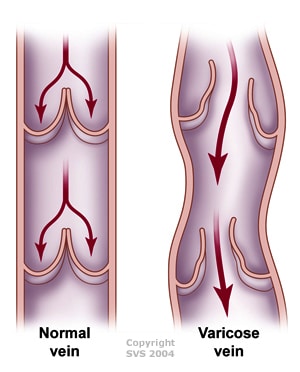TREATED CONDITIONS
Carotid Artery Disease
What is Carotid Artery Disease?
Carotid artery disease occurs when the major arteries in your neck become narrowed or blocked. These arteries, called the carotid arteries, supply your brain with blood. Your carotid arteries extend from your aorta in your chest to the brain inside your skull.
Arteries bring oxygen-rich blood from your heart to the rest of your body and veins return oxygen-poor blood back to your heart.
Varicose veins are swollen veins that you can see through your skin. They often look blue, bulging, and twisted. Left untreated, varicose veins may worsen over time. Varicose veins can cause aching and feelings of fatigue as well as skin changes like rashes, redness, and sores. As many as 40 million Americans, most of them women, have varicose veins.
You have three kinds of veins in your legs; the superficial veins, which lie closest to your skin, the deep veins, which lie in groups of muscles and perforating veins, which connect the superficial veins to the deep veins. The deep veins lead to the vena cava, your body’s largest vein, which runs directly to your heart. Varicose veins occur in the superficial veins in your legs.
When you are in the upright position, the blood in your leg veins must work against gravity to return to your heart. To accomplish this, your leg muscles squeeze the deep veins of your legs and feet. One-way flaps, called valves, in your veins keep blood flowing in the right direction. When your leg muscles contract, the valves inside your veins open. When your legs relax, the valves close. This prevents blood from flowing in reverse, back down the legs. The entire process of sending blood back to the heart is called the venous pump.
When you walk and your leg muscles squeeze, the venous pump works well. But when you sit or stand, especially for a long time, the blood in your leg veins can pool and the pressure in your veins can increase. Deep veins and perforating veins are usually able to withstand short periods of increased pressures. However, if you are a susceptible individual, your veins can stretch if you repeatedly sit or stand for a long time. This stretching can sometimes weaken the walls of your veins and damage your vein valves. Varicose veins may result. Spider veins are mild varicose veins. They look like a nest of red or blue lines just under your skin. Spider veins are not a serious medical problem, but they can be a cosmetic concern to some people, and they can cause symptoms of aching pain and itching in others.
Click Here To know more about Varicose Veins
